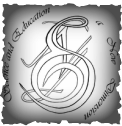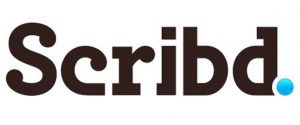Science and Education a New Dimension
Iss. 234. 2020.
N. Darchuk “The Golden Corpora” of Lesja Ukrayinka’s poetry
https://doi.org/10.31174/SEND-Ph2020-234VIII69-01
The article reviews linguistic principles of design and development of digital Corpora of Lesja Ukrayinka’s poetry as the basis for the study of linguistic peculiarities of the individual writing style. The Corpora with glossaries are located in the World Wide Web resource (www.mova.info). The developed system for the study of morphological, syntactical and semantic structures of the writing style based on computerized grammar checking software will enable to receive immediately under request the lists of lexemes, word forms, morphs, word combinations, lexical-semantic groups with statistical key figures.
Keywords: The Corpora of Ukrainian texts, morphological annotation, syntactical annotation, morph annotation, semantic annotation.
N. Darchuk “The Golden Corpora” of Lesja Ukrayinka’s poetry
O. V. Domnich Indigenous Concept TATTOO in Publicistic Discourse of Modern Multinational English
https://doi.org/10.31174/SEND-Ph2020-234VIII69-02
Abstract. The concept TATTOO belongs to indigenous linguocultural imported concepts and operates in the conceptual sphere of multinational English. The lexical unit “tattoo” is represented by a wide word-formation nest, which includes derivatives, namely nouns, verbs, adjectives, participle I and participle II (formed with the English affixes), which are formed as a result of conversion and affixation.
Keywords: concept TATTOO, lexical unit “tattoo”, indigenous concept, publicistic discourse.
O. V. Domnich Indigenous Concept TATTOO in Publicistic Discourse of Modern Multinational English
E. Yu. Dubenkо Stylistics of advertising texts in English and Ukrainian traditions: linguopragmatic aspect
https://doi.org/10.31174/SEND-Ph2020-234VIII69-03
Abstract. The paper presents a comparative analysis of stylistic means employed in English and Ukrainian advertising considering them from linguo-pragmatic standpoint. It aims to isolate the groups of most essential stylistic tools that secure the effectiveness of advertisement text in the two compared advertising traditions. In an interlanguage perspective, the stylistic techniques used by copywriters are indicative of certain linguo-cultural factors that give shape to those forms of advertising which have taken root in corresponding linguo- cultural communities. The paper focuses on both isomorphic stylistic features of English and Ukrainian advertising texts and stylistic discriminants that have established themselves in Anglo-American and Ukrainian traditions of advertising paying equal attention to the means conditioned by the factors of purely linguistic and cultural nature.
Keywords: advertisement, isomorphic stylistic features, allomorphic stylistic features, attention value, readability, memorability, selling power.
E. Yu. Dubenkо Stylistics of advertising texts in English and Ukrainian traditions: linguopragmatic aspect
N. S. Golod Problems of Congruence of Genre and Style in Vasyl Stefanyk's Short Stories
https://doi.org/10.31174/SEND-Ph2020-234VIII69-04
In the article the elements of Vasyl Stefanyk’s artistic mastery are studied. Among them: the ability to choose, and, if needed, to transform, modernize, synthesize the optimal genre variation of a writing; expressing the depth and power of emotion, using the poetical legacy of various literary streams, as expressionism, naturalism, realism, impressionism, etc.; reaching the maximum influence on a recipient, combining the expressiveness of the depicted with the drama narrative.
Keywords: dramaturgy, dramatic effect, aesthetics of the malformed, modernism, expressionism.
N. S. Golod Problems of Congruence of Genre and Style in Vasyl Stefanyk’s Short Stories
D. M. Khaidar The peculiarities of conveying agreement/disagreement in youth slang of modern French
https://doi.org/10.31174/SEND-Ph2020-234VIII69-05
Abstract. The article deals with the means of expressing agreement / disagreement in the language of youth, their characteristics and their classification. The main features of these means are expressiveness and ease, verlanization, usage of borrowings, reduction and truncation at the phonetic, lexical and grammatical levels. In the expression of agreement / disagreement, youth communication is unconstrained, it has a high degree of emotionality and the desire for self-expression.
Keywords: agreement / disagreement, modern French, language of youth, slang.
D. M. Khaidar The peculiarities of conveying agreement/disagreement in youth slang of modern French
A. Kiselova The appearance and functioning of hashtags in a situation of worldwide pandemic
https://doi.org/10.31174/SEND-Ph2020-234VIII69-06
Abstract. The article is devoted to such a key element of modern media discourse as a hashtag. Features of use and main functions of hashtags are considered. The article contains an analysis of the use of hashtags thematically related to the global coronavirus pandemic in 2020 based on social media posts published between March and August 2020 in English, Ukrainian and Russian.
Keywords: media text, social networks, media discourse, hashtag.
A. Kiselova The appearance and functioning of hashtags in a situation of worldwide pandemic
T. P. Kozlovska The functions of the Spanish borrowings in the English language of fiction
https://doi.org/10.31174/SEND-Ph2020-234VIII69-07
Abstract: a Spanish origin vocabulary that is incorporated in the American English is of utmost significance not only from paradigmatic but also syntagmatic aspects. Its use in the fiction texts of the American authors is a great determinator of the important function it performs within the frames of the English language spoken by the USA population. It also sets the grounds for the further establishment of the words and word combinations that have initially appeared on the pages of the fiction works.
Keywords: hispanicism, borrowing, polynational language, communication.
T. P. Kozlovska The functions of the Spanish borrowings in the English language of fiction
O. V. Kraynyk Explicit and implicit prohibition in the German literary text
https://doi.org/10.31174/SEND-Ph2020-234VIII69-08
Abstract. In the proposed article, the author examines the prohibition in terms of linguistic pragmatics. Prohibition is considered as a reactive speech act of negation in sequence with the initiative speech act of the interlocutor. The expression of the ban is through various types and means of implementation. Regularities of realization of explicit and implicit speech acts of prohibition in different types of utterances are established: directive, assertive, commission and expressive.
Keywords: negation, speech act, illocutionary purpose, prohibition, explicit expression, implicit expression.
O. V. Kraynyk Explicit and implicit prohibition in the German literary text
M. Lysak, O. Materynska Semantics of the compound nouns with a somatic component in German sports discourse
https://doi.org/10.31174/SEND-Ph2020-234VIII69-09
Abstract. The article focuses on the semantics of the compound nouns with a somatic component in German sports discourse. It determines the most widespread somatic components within their structure and shows their role in the formation of the stylistic coloring of sports comments. The article highlights the pragmatic impact of the compound nouns under analysis. The obtained data is validated by a sociolinguistic survey among German native speakers on the understanding of the motivation of the proposed com- pound nouns in the context, and nuances of their use in oral and written communication.
Keywords: compound noun, somatic component, semantics, motivation, bahuvrihi, sociolinguistic survey.
M. Lysak, O. Materynska Semantics of the compound nouns with a somatic component in German sports discourse
V. V. Marchenko Tone Characteristics in Poems and Songs: A Comparative Study
https://doi.org/10.31174/SEND-Ph2020-234VIII69-10
Abstract. In the present study we compare the components of speech and musical intonation and their integrated functioning within a song with a focus on tonal modifications. We ran an experimental phonetic research which comprised auditive and acoustic analyses followed by linguistic interpretation of the results. The research material included poems and songs created by setting the poetic texts to music. The degree of correspondence between speech intonation and musical intonation was quantified by identifying the pitch contour of a poem and then comparing this contour to the musical melodic contour to which the poem is set in a song. Overall, the pattern of the results indicates that despite the revealed differences, melodies in songs were found mainly congruent with the spoken pitch contour.
Keywords: speech, music, intonation, melody, tone, pitch.
V. V. Marchenko Tone Characteristics in Poems and Songs: A Comparative Study
A.V. Sheliakina Secondary nomination as a means of creating unofficial names of states (based on toponymic nicknames of US states)
https://doi.org/10.31174/SEND-Ph2020-234VIII69-11
Abstract. The article analyzes the main components involved in the process of creating secondary names. The reasons for the creation of the secondary nomination in American toponymy are generalized. The motivational basis for giving a certain nickname is described. The study is based on the nicknames of the US states which were selected from electronic and printed country directories and encyclopedias. Some examples of secondary names of the states formed by metaphorization as one of the main lexical and semantic means of creating nicknames are given. In the analyzed examples, the following types of similarities have been identified: by size, shape, age, association (impression, evaluation, quality), by appearance using the toponyms.
Keywords: secondary nomination, toponym, toponymic nickname, metaphor, types of similarities, motivational basis, etc.
A.V. Sheliakina Secondary nomination as a means of creating unofficial names of states (based on toponymic nicknames of US states)
K. P. Shkil Personification as a method for displaying an individual author style (on the material of A. Fet’s poetry)
https://doi.org/10.31174/SEND-Ph2020-234VIII69-12
Abstract. The article is devoted to the study of the concepts of “trope” and “stylistic figure”. The article aims to consider the personification as a way of displaying the individual-author style of A. Fet. Designs using personification, forming the individual-author style of A. Fet, are analyzed and typologized. A poetic text is a unified and indivisible poetic symbol, in terms of information and communication, all levels of which are interdependent. The functions of poetic language are notable for semantic diversity. The individual style of the poet is a communicative-cognitive space of a linguistic personality, which is formed in the artistic discourse. The language of the individual style has a linguotypological essence since it manifests with the individual styles of other personalities the artistic discourse of the era.
Keywords: trope, stylistic figure, personification, individual author style.
K. P. Shkil Personification as a method for displaying an individual author style (on the material of A. Fet’s poetry)
V. D. Soprykina Fusing and reduplication as the methods of creating pseudonyms of the modern Ukrainian artists
https://doi.org/10.31174/SEND-Ph2020-234VIII69-13
Abstract. The article defines the status of the fusing and reduplication as the methods of word formation of unofficial proper names. The research material is based on the Ukrainian modern artists’ pseudonyms (for example, singers and writer unofficial names). The purpose of the study is to formulate a definition of fusing and reduplication, to show different scientists’ opinions in this topic, determine place for these concepts in the word formation system. The results of the study will make it possible to concretize the scientific ideas about pseudonyms’ word formation, to conclude that fusing and reduplication are non-productive methods of word building.
Keywords: word formation, proper names, pseudonym, fusing, reduplication.
V. D. Soprykina Fusing and reduplication as the methods of creating pseudonyms of the modern Ukrainian artists
M. V. Stasiv Communicative-and-pragmatic manifestation of expressive speech acts through elucidative utterances in modern English
https://doi.org/10.31174/SEND-Ph2020-234VIII69-14
Abstract. The article deals with the consideration of communicative-and-pragmatic manifestations of speech acts of expressive type within the elucidative utterances of modern English. The definition of the elucidative speech act-expressive has been provided in the study; the key role of the illocutionary predicate of the principal clause of these utterances-acts in the process of formation of their communicative-and-pragmatic structure has been revealed; the taxonomy of communicative-and-pragmatic types of expressively colored elucidative utterances embodied in expressive speech acts of elucidative type has been compiled.
Keywords: communicative-and-pragmatic manifestation, elucidative speech act-expressive, elucidative utterance-expressive, key illocutionary predicate, communicative-and-pragmatic type of speech act.
M. V. Stasiv Communicative-and-pragmatic manifestation of expressive speech acts through elucidative utterances in modern English
S. V. Subota Graphic and morphological features of English-language Internet discourse (based on the Facebook comments)
https://doi.org/10.31174/SEND-Ph2020-234VIII69-15
Abstract. The article is devoted to the investigation of the linguistic means of Internet communication as a new kind of language. Graphic and morphological features of English-language comments on the social network Facebook are analyzed. It was found that the most common phenomena of interactive communication at the grapheme level are abbreviations, contractions and unconventional spelling. The peculiarities of interactive communication at the morphological level include errors in the use of word forms, as well as incorrect use of pronouns and prepositions.
Keywords: Internet discourse, interactive communication, social networks, comments.
S. V. Subota Graphic and morphological features of English-language Internet discourse (based on the Facebook comments)
Y. Y. Terniievska Specifics of the concepts of linguistic norm and variability
https://doi.org/10.31174/SEND-Ph2020-234VIII69-16
Abstract. The article is devoted to the description of the concepts of the linguistic norm and variability, as well as the differentiation of the terms “variability”, “variation” and “variance”. In particular, the approaches of scientists to understanding these phenomena are analyzed, the most used definitions of them are given and the main differences between them are revealed.
Keywords: linguistic norm, variability, variation, variance, language variant.
Y. Y. Terniievska Specifics of the concepts of linguistic norm and variability
I. Tyshchenko Artistic concepts in " Mermaid Tales" by A. N. Tolstoy
https://doi.org/10.31174/SEND-Ph2020-234VIII69-17
Abstract. The article reveals some of the key artistic concepts’ semantic content and ways of verbalizing within the fictional world of “Mermaid Tales” by A. N. Tolstoy. The concepts of sun, water, peasant’s house, peasant person are analyzed. It is shown that the semantic components of these concepts are determined by their paradigmatic and syntagmatic connections, which indicate two sources – the concept sphere of Russian folklore and the concept sphere of everyday life of the Russian peasantry. This is related to the content ambivalence of the analyzed concepts.
Keywords: Russian literary tale, “Mermaid Tales” by A. N. Tolstoy, artistic concept, concept sphere.
I. Tyshchenko Artistic concepts in ” Mermaid Tales” by A. N. Tolstoy







